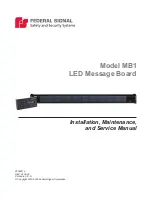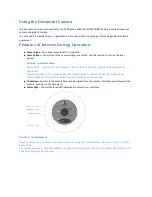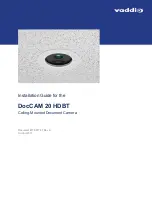
Piranha ES-Sx User Manual
03-032-20162-00
Teledyne DALSA
28
Figure 6: Signal Processing Chain
Digital Processing
To optimize camera performance, digital signal processing should be completed after any
analog adjustments.
1.
Fixed pattern noise (FPN) calibration (calculated using the
command) is used to
subtract away individual pixel dark current.
2.
Photo-Response Non-Uniformity (PRNU) coefficients are used to correct the
difference in responsivity of individual pixels (i.e. given the same amount of light
different pixels will charge up at different rates) and the change in light intensity
across the image either because of the light source or due to optical aberrations (e.g.
there many be more light in the center of the image). PRNU coefficients are
multipliers and are defined to be of a value greater than or equal to 1. This ensures
that all pixels will saturate together. When using PRNU correction, it is important
that the A/D offset and Fixed Pattern Noise (FPN) or per pixel offsets are subtracted
prior to the multiplication by the PRNU coefficient. The subtraction of these 2
components ensure that the video supplied to the PRNU multiplier is nominally zero
and zero multiplied by anything is still zero resulting in no PRNU coefficient induced
FPN. If the offset is not subtracted from the video then there will be artifacts in the
video at low light caused by the multiplication of the offset value by the PRNU
coefficients.
3.
Background subtract (
ssb
command), system gain (
ssg
command), and background
addition
(
sa
b
) are used to increase image contrast after FPN and PRNU calibration.
It is useful for systems that process 8-bit data but want to take advantage of the
camera’s 12-bit digital processing chain. For example, if you find that your image is
consistently between 128 and 255 DN (8-bit), you can subtract off 128 (
ssb 2048
) and
then multiply by 2 (
ssg 8192
) to get an output range from 0 to 255.
The following sections are organized as follows:
1.
Setting the Gain.
2.
Calibrating the Camera to Remove Non-Uniformity (Flat Field Correction)
provides an overview of how to perform flat field calibration.
3.
provides a detailed description of all digital processing
chain commands.
The algorithm calculates the gain of the 16
th
tap to set the tap mean to the user target. For
adjacent tap 15, the mean of the last 16 pixels are gained to match the mean of the first 16
pixels of tap 16. This seam matching continues to tap 1.
















































